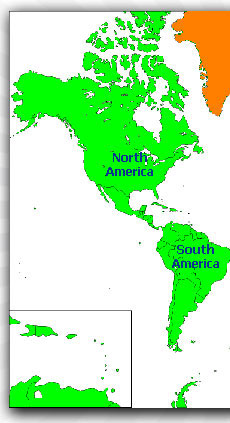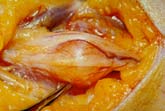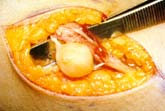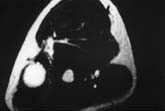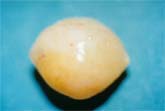Schwannomatosis
View other procedure from our surgery gallery
Schwannomatosis is a rare form of NF that has only recently been recognized. People with schwannomatosis develop multiple schwannomas on cranial, spinal and peripheral nerves--but they do not develop vestibular tumors and do not go deaf. Affected individuals usually have much greater problems with pain than with neurological disability, although as with all forms of NF, schwannomatosis may vary greatly between patients.
They also do not develop any other kinds of tumors (for example, meningiomas, ependymomas or astrocytomas) and do not have learning disabilities. For reasons not yet understood, people with schwannomatosis have problems with chronic pain that often exceeds their neurological problems.
The first symptom of schwannomatosis is almost always pain, which can occur in any part of the body. Many patients with schwannomatosis go several years before the source of their pain is realized because they have few or no neurological symptoms. Once a tumor is found, it is important to determine its pathological type by examining a piece of it under a microscope. Patients with schwannomatosis are always found to have schwannomas, not Neurofibromatosis. For reasons not yet understood, about 1/3 of patients with schwannomatosis have tumors limited to a single part of the body, such as an arm, a leg or a segment of the spine.
Once a person is found to have multiple schwannomas, the possibility of NF2 must be excluded before a diagnosis of schwannomatosis is given. In an older person with no hearing loss, NF2 is unlikely. In a younger person, or in any person with hearing loss and multiple schwannomas, it is imperative that a high quality MRI scan of the base of the brain be done to exclude the possibility of vestibular tumors and NF2. At the current time there is no "blood test" to determine if a patient has schwannomatosis.
Surgical management of schwannomatosis is often quite effective. When tumors are completely removed, pain often subsides -- although it may recur if new tumors form. When surgery is not feasible, management in a multidisciplinary pain clinic is advisable. There is no currently accepted medical treatment or drug for schwannomatosis.
Because schwannomatosis has been a relatively recent "discovery," there are no set schedules of tests that all patients should undergo. The tumors of schwannomatosis are relatively slow growing, and probably only need to be imaged when symptoms change. Schwannomatosis is a genetic condition, but may often skip generations so that more distant family members with unexplained neurological symptoms and/or unexplained pain should be evaluated for the possibility that they are also affected.
Schwannomas
Both schwannomas and Neurofibromatosis originate in the insulating covering of peripheral nerves called the nerve sheath. Schwannomas are very homogenous tumors consisting ONLY of nerve sheath cells or Schwann cells. They stay on the outside of the nerve, but may push it aside or against a bony structure causing damage. Neurofibromatosis are very heterogeneous tumors which incorporate all sorts of cells and structural elements in addition to the Schwann cells. They infiltrate the nerve and splay apart the individual nerve fibers. Neurofibromatosis sometimes degenerate into cancer, but for reasons that we do not understand, schwannomas never do.
See Other Patient Procedures in Surgery Gallery
 Schwannoma Cell Tumor Schwannoma Cell Tumor
 Median Nerve Schwannoma Median Nerve Schwannoma
 Giant Brachial Plexus Nerve Tumor Giant Brachial Plexus Nerve Tumor
 Giant Sciatic Nerve Tumor Giant Sciatic Nerve Tumor
 Malignant Sciatic Neurofibroma Malignant Sciatic Neurofibroma
 Peroneal Nerve Schwannoma Peroneal Nerve Schwannoma
 Median Nerve Lipoma Tumor Median Nerve Lipoma Tumor |
